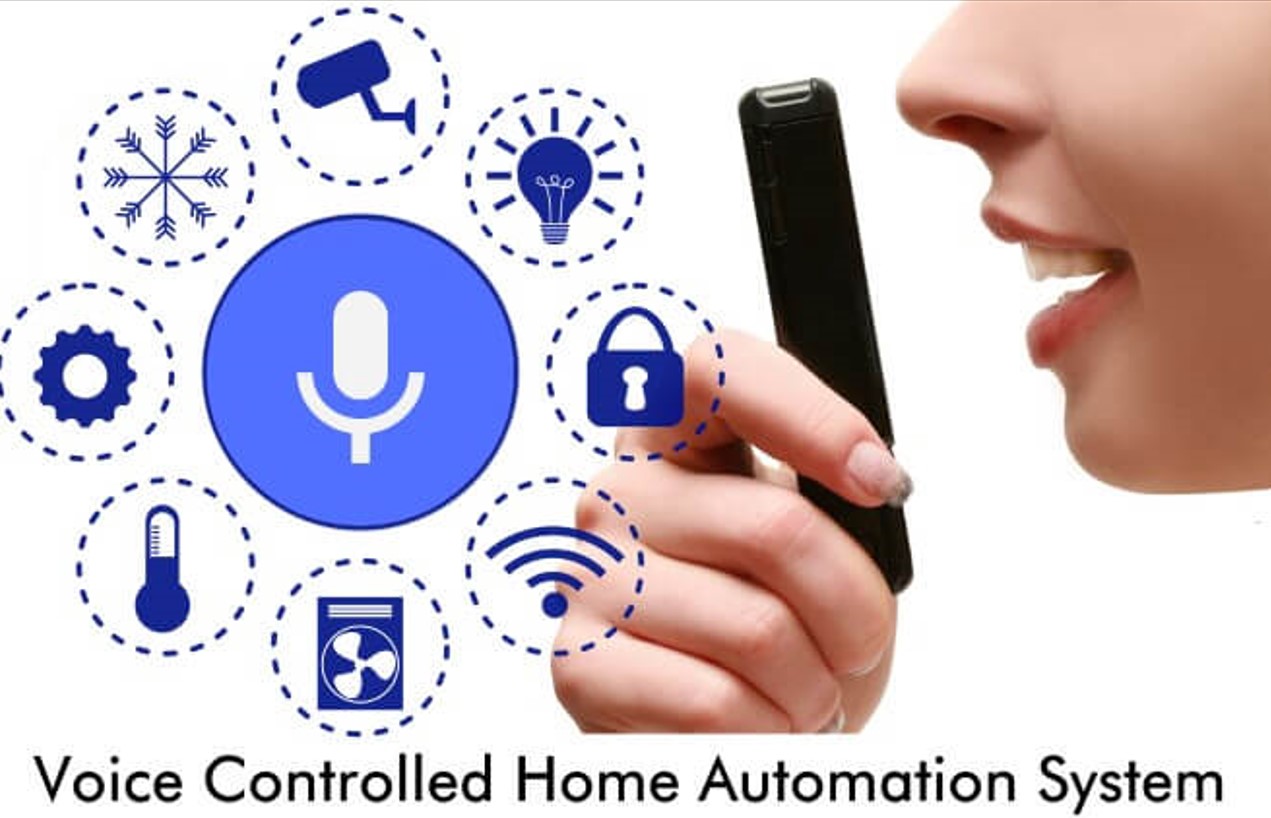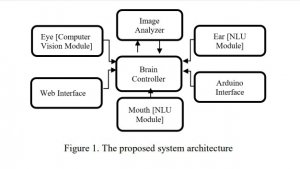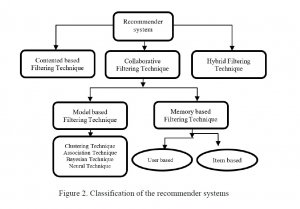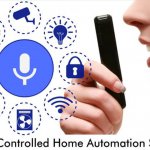
ABSTRACT
The objective of this work is to take a step further in this direction by incorporating voice control and artificial intelligence (AI) into internet of things (IoT)-based smart home systems to create more efficient automated
smart home systems.
RESEARCH METHOD
The proposed system architecture is depicted in Figure 1. This work aims to make voice commands in human natural language a better and easier way to connect with smart home appliances or web applications. Also a recommendation system to control home appliances is provided. A back-end server is configured, especially for heavy processing operations such as NLP, recommendation system, and image processing. The server is created via an open source microframework for python (flask). The present system includes the following main modules:
a) Authentication module
b) Remote voice control module
c) Smart recommendation module
d) Weather information module


HOME APPLIANCEs CONTROLL
With the help of a classification model, it was possible to predict the user’s behavior in turning on/off (e.g., light) in the home automation system based on his behavior with the time of day and the room light state throughout several months of the year. Classification models provide an overcome and predictions for type of suggestion by training on several samples or data created by saving the user’s behaviour on the home lights in a dataset. This dataset will be available after certain time and could be improved with dataset rising. Naïve Bayes classifier have been employed to provide reasonable accuracy based on the Bayes rule and secondary probabilities for on and off events.
For the web interface, the front-end used to adapt data into graphical interface for user to interact with and view data via digital interaction using cascading style sheets (CSS), HTML and Java script for the front and back end.
On the hardware side, Arduino and Raspberry Pi were used. On the Arduino side, we can utilize Arduino to control nearly any home appliance and make things simple to use by leveraging NLP to give voice commands to the mobile device or web interface, as previously described.
You may use Arduino to control light, fans, air conditioning, doors, and curtains, as well as calculate water flow, electricity usage, and control television by setting favorite channels and turning it on when you need to use any functions, or hardware such as sensors, motors, and wires. The firmware used was Arduino integrated development environment (IDE), and an Arduino uno kit with 32 kB of memory and 16 MHz clocks was utilized as a control signal to switch functions on/off through a set of relays. We connect Arduino to the internet using the ethernet shield, which is backwards compatible with earlier versions but requires the newer W5500 chip, as well as the ethernet and SD libraries (to read and write SD card).
CONCLUSION
To operate home appliances, the majority of present home automation systems follow a series of procedures or commands. To overcome the constraints of previous automation systems (such as the necessity to connect the system to the internet and construct an AI recommendation system), web and android applications based on voice commands have been utilized to make controlling household appliances more flexible by interpreting these commands into reality using Arduino and Raspberry Pi boards. In addition, a recommendation system has been developed to predict user’s behavior based on the data saved in the dataset.


COMMENTS